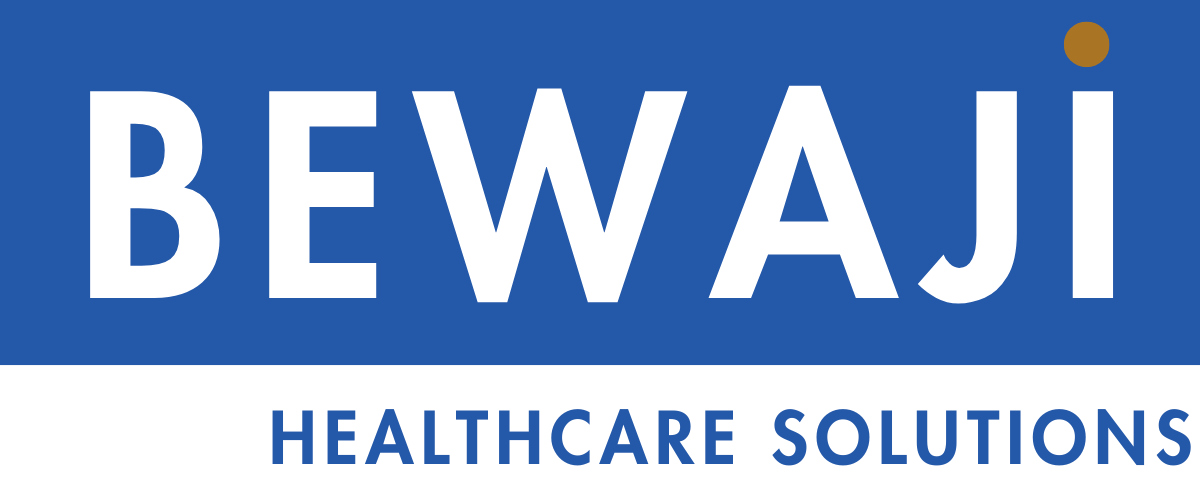According to Harvard Business Review, between 2018 and 2022, digital leaders have seen significant growth in their customer base and revenues, while digital laggards have faced stagnation and decline. Leaders grew their active customer base at 0.5% and retail revenues at 0.8% annually. In comparison, laggards saw zero growth in their active customer base and a decline of 1.4% per year in retail revenues. Operating analog in a digital world is akin to racing a sailboat against speedboats—the tides of progress leave you behind. Understanding and adapting business models to this new digital era is crucial for modern enterprises to stay relevant and competitive. This article explores how digital environments enhance existing business models and enable entirely new ones, driving innovation and competitive advantage.
Understanding Business Models
A business model is a strategic plan that outlines how a company creates, delivers, and captures value. It includes critical components such as value propositions, customer segments, channels, customer relationships, revenue streams, essential resources, key activities, key partnerships, and cost structure. It’s essentially the story of how the organization converts its inputs into value. Many companies do not have a coherent narrative. While the development of this narrative is an ongoing “soul-searching” exercise. Organizations need to have a working theory for their business model. This understanding is essential for business model innovation in healthcare.
Key Components of Business Models
- Customer Segments and Value Propositions: The foundation of any business model is understanding who the customers are and what unique value is provided to them. This involves identifying target customer segments and tailoring value propositions to meet their needs and preferences.
- Channels and Customer Relationships: This involves determining the most effective ways to reach customers and maintain relationships. Channels can include direct sales, online platforms, or partnerships with other organizations.
- Revenue Streams: It is crucial to conceptually connect the company’s revenue streams to its value propositions. This helps to understand how value is created and captured.
- Essential Resources and Activities: Determining what the company needs to perform to deliver its value proposition, reach customers, and generate revenue. Essential resources can include human resources, technology, and financial capital. At the same time, key activities encompass the core tasks required to run the business.
- Key Partnerships: Identifying external organizations that help optimize the business model. These could be suppliers, technology partners, or strategic alliances that provide essential support or enhance the company’s offerings.
- Cost Structure: Focusing on the financial implications of the business model, including costs associated with resources, activities, and partnerships. This involves understanding fixed and variable costs and seeking ways to optimize expenses.
Traditional Business Models in Healthcare
Healthcare is an industry with diverse business models. Here are some traditional models:
1. Private Practice Model
- Description: Healthcare professionals own and operate their practices, managing patient care and administrative tasks.
- Revenue Generation: Fee-for-service or insurance reimbursements.
- Operations: Small scale, often with a few support staff.
- Marketing: Reputation-based, local advertising, and word-of-mouth referrals.
- Challenges: Managing overhead costs, maintaining steady patient flow, and dealing with insurance complexities.
- Example: A local dentist providing routine check-ups and other dental procedures.
2. Health Maintenance Organization (HMO) Model
- Description: HMOs provide comprehensive healthcare services to members through a network of providers for a fixed fee.
- Revenue Generation: Membership fees, often supplemented by employer contributions.
- Operations: Integrated care delivery with an emphasis on preventive care.
- Marketing: Focus on cost savings and comprehensive care.
- Challenges: Managing network provider relationships and controlling costs.
- Example: Kaiser Permanente offers a wide range of services through its network.
3. Hospital System Model
- Description: Large organizations operate multiple hospitals and clinics under a single structure.
- Revenue Generation: Fee-for-service, insurance reimbursements, government funding, and patient payments.
- Operations: Large-scale operations with diverse services and significant administrative infrastructure.
- Marketing: Broad outreach, partnerships with insurers, and community programs.
- Challenges: Coordinating care across facilities, maintaining high standards, and managing operational efficiency.
- Example: HCA Healthcare operating numerous hospitals and outpatient centers.
A well-defined business model is essential for a business’s success and sustainability. Digital environments significantly influence traditional healthcare models, leading to a shift towards more patient-centered and personalized care.
Digital Transformation of Business Models
Digital transformation involves integrating digital technology into all areas of an organization, fundamentally changing how it operates and delivers value. This transformation includes digital technologies, digital capabilities, and digital culture.
Core Aspects of Digital Transformation
- Digital Culture: A mindset shift towards embracing innovation, experimentation, and continuous learning. This involves fostering a culture where employees are encouraged to adopt new technologies and processes and continuous improvement is a core value.
- Process Re-engineering: Streamlining processes to be more efficient, agile, and customer-centric. This can involve automating routine tasks, redesigning workflows, and leveraging technology to enhance productivity and reduce costs.
- Technology Adoption: Leveraging AI, cloud computing, data analytics, IoT, robotics, social media, and virtual reality. These technologies can transform business operations, from improving patient care to enhancing administrative efficiency.
- Data-Driven Decision Making: Using data insights to inform strategic decisions, measure performance, and optimize operations. This involves collecting and analyzing data to gain insights into customer behavior, market trends, and operational performance.
- Customer-Centricity: Ensuring that all digital transformation initiatives meet customer needs through personalized experiences and services. This can involve using digital tools to enhance customer engagement, improve service delivery, and build customer loyalty.
- Innovation: Encouraging a culture of innovation through experimentation with new ideas and prototyping. This involves fostering an environment where employees are encouraged to think creatively and pursue new opportunities for growth and improvement.
Benefits of Digital Transformation
- Increased Efficiency: Streamlined processes reduce costs and improve productivity. By automating routine tasks and optimizing workflows, companies can operate more efficiently and allocate resources more effectively.
- Improved Customer Experience: Personalized experiences and real-time engagement create loyal customers. Digital tools enable companies to engage with customers meaningfully, providing tailored services and building stronger relationships.
- New Revenue Streams: Opens up opportunities for digital products or services. By leveraging digital technologies, companies can develop new offerings and tap into new markets, creating additional revenue streams.
- Competitive Advantage: Organizations that undergo digital transformation gain an edge in their markets. By adopting innovative technologies and processes, companies can differentiate themselves from competitors and achieve sustainable growth.
Challenges of Digital Transformation
- Cultural Resistance: Changing organizational culture can be challenging. Employees may resist change, and there may be a lack of understanding or buy-in for new initiatives.
- Technical Complexity: Implementing new technologies requires significant expertise and resources. Companies may face challenges in integrating new systems with existing infrastructure and in managing the technical aspects of digital transformation.
- Data Management: Managing large amounts of data is crucial for informed decision-making. Companies need to ensure that they have the necessary tools and processes in place to collect, store, and analyze data effectively.
How Digital Tools and Technologies Transform Business Models
Digital tools and technologies such as big data, AI, and IoT are transforming key components of business models. Below are some of digital tools for healthcare business model innovation:
1. Big Data
- Enhanced Decision-Making: Big data analytics provides insights into customer behavior and market trends. It enables companies to make data-driven decisions and develop more effective strategies.
- Personalization: Enables personalized products and services. Companies can tailor their offerings by analyzing customer data to meet individual needs and preferences, enhancing customer satisfaction and loyalty.
2. Artificial Intelligence (AI)
- Automation and Efficiency: AI automates routine tasks and augments human capabilities. It can handle tasks such as data entry, scheduling, and customer service, freeing up employees to focus on more complex and value-added activities.
- Advanced Analytics: Improves diagnostics and marketing optimization. AI can analyze large datasets to identify patterns and trends, providing valuable decision-making and strategy development insights.
3. Internet of Things (IoT)
- Real-Time Monitoring: Enables real-time monitoring of systems and processes. IoT devices can collect and transmit data in real time, allowing companies to monitor operations and respond quickly to issues.
- Operational Efficiency: IoT facilitates smart manufacturing and asset management. It can optimize production processes and improve resource management, leading to increased efficiency and reduced costs.
These technologies affect various business model components, including value propositions, customer segments, channels, customer relationships, revenue streams, key resources, key activities, key partnerships, and cost structure.
Case Studies of Successful Digital Transformation
1. Netflix
- Transformation: From DVD rentals to streaming and content production.
- Impact: Exponential subscriber growth and market leadership in streaming. Netflix’s transition to a digital platform enabled it to reach a global audience and create a vast library of original content, setting it apart from competitors.
2. Amazon
- Transformation: From online bookstore to e-commerce and cloud computing giant.
- Impact: E-commerce dominance and diversified revenue streams. Amazon’s investment in digital infrastructure and innovative services like Amazon Web Services (AWS) has positioned it as a leader in multiple industries.
3. Uber
- Transformation: From ride-hailing service to mobility platform.
- Impact: Market disruption and substantial revenue growth. Uber’s digital platform has revolutionized transportation, providing convenient and cost-effective services and expanding into new areas like food delivery and freight.
These case studies demonstrate how companies have successfully transformed their business models through digital means.
New Business Models Enabled by Digital Environments
Digital environments enable new business models, such as platform-based models, subscription services, and freemium models.
Platform-Based Models
- Description: Connects consumers and producers through an online platform. These models facilitate interactions and transactions, creating value by reducing search and transaction costs.
- Benefits: Scalability, lower operational costs, and enhanced customer engagement. Platforms can rapidly scale by attracting more users and leveraging digital infrastructure.
Subscription Services
- Description: Charges customers a recurring fee for access to a product or service. This model is prevalent in digital media and software and is increasing in other sectors like healthcare and retail.
- Benefits: Predictable revenue streams and customer loyalty. Subscription models provide a steady income and foster ongoing relationships with customers.
Freemium Models
- Description: Offers essential services for free while charging for premium features. This approach is common in software and digital services, allowing users to experience the product before committing financially.
- Benefits: Wide user base and enhanced user engagement. Freemium models attract many users and can convert them into paying customers.
Benefits of New Business Models
- Scalability: Digital models can grow rapidly, reaching a global audience without physical infrastructure constraints. For example, an online platform can onboard new users worldwide without opening new locations.
- Lower Operational Costs: Reducing the need for physical assets. Digital infrastructure reduces the need for physical locations and the associated overheads.
- Enhanced Customer Engagement: Continuous and personalized interaction with customers. Digital tools enable companies to engage with customers meaningfully, providing tailored experiences and building stronger relationships.
Challenges and Considerations
- Cybersecurity: Increased risk of cyber-attacks. As businesses digitize operations, they become more vulnerable to cyber threats, requiring robust security measures to protect sensitive information.
- Data Privacy: Compliance with data privacy regulations. Companies must comply with regulations like GDPR and HIPAA, protecting customer data and maintaining trust.
- Technology Adoption: Integrating new digital solutions with legacy systems. Companies may face challenges in adopting new technologies and ensuring compatibility with existing systems.
- Change Management: Overcoming resistance to change. Employees and stakeholders may resist changes to established processes and practices, requiring effective change management strategies.
- Customer Experience: Maintaining consistent and high-quality experiences. Ensuring that digital interactions are seamless and meet customer expectations is crucial for success.
- Legal and Ethical Issues: Protecting intellectual property and addressing ethical concerns. Companies must navigate legal and ethical issues related to digital transformation, ensuring compliance and ethical conduct.
- Market Competition: Intensified competition and rapid innovation. Digital business models often face increased competition, requiring continuous innovation and adaptation.
Conclusion
Digital environments enhance traditional business models and create new opportunities for innovation and growth. Businesses must embrace digital transformation and continuously adapt their business models to stay competitive in the evolving market landscape. By leveraging digital technologies and adopting new business models, companies can realize the benefits of healthcare digital transformation, achieve sustainable growth, improve customer experiences, and gain a competitive advantage in their industries. Embracing digital transformation is no longer optional but necessary for businesses aiming to thrive in the digital age.


